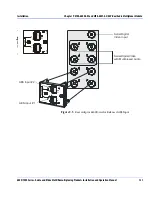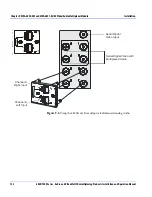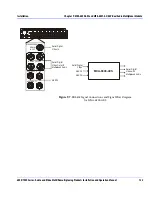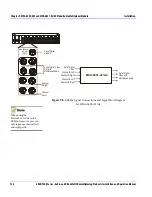
Chapter 8: ENC/ENS/ENX-6801/M Encoder Modules and Accessories
User-Controlled Parameters
120
6800/7000 Series - Audio and Video Multi/Demultiplexing Products Installation and Operation Manual
Delay Mode
In
Line
Delay
mode, the clock used to input to the memory buffer is
derived from the input signal. The clock used to output from the
memory buffer is also derived from the input signal. In this mode,
high-frequency jitter is removed at the input reclocking circuit, but
low-frequency jitter will pass right through the entire unit.
Line Store
In
Line Store
(i.e. line synchronizer) mode, the clock used to input to the
memory buffer is derived from the input signal. The clock used to
output from the memory buffer is derived from the input genlock signal.
In this mode, high-frequency jitter is removed at the input reclocking
circuit, and the low-frequency jitter is removed through the frame
buffer.
Input Signal
The modules are shipped in line
Delay
mode because the timing
relationships within the system are not known. If the input signal is not
advanced less than one line in time from the destination, the line
synchronizer in the encoder cannot provide the correct picture position.
Output Signal
The output signal will either “slip” a line up or down depending on
whether the signal is arriving at the destination early or late.
*5
Controls fine phase for ENC/ENX-6801. For fine phase control
of ENS-6801, use potentiometer on front of plug-in
submodule.
*6
Controls are disabled for PAL-M standard.
*7
• Increase refers to the SCH phase adjustment by 90°
increments from 0° to 270°.
• Decrease adjust the SCH phase in the opposite direction:
both of these adjustments are for PAL signals.
• NTSC signals will change to 0° or 180° phasing when
selecting either increase or decrease.
Function Description
















































